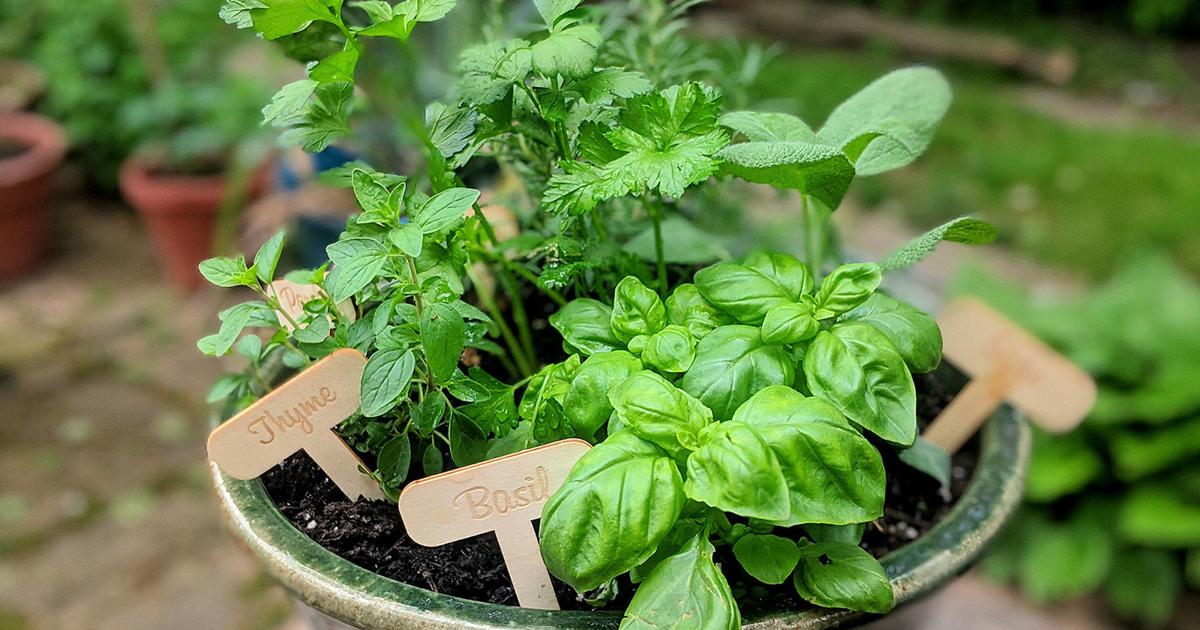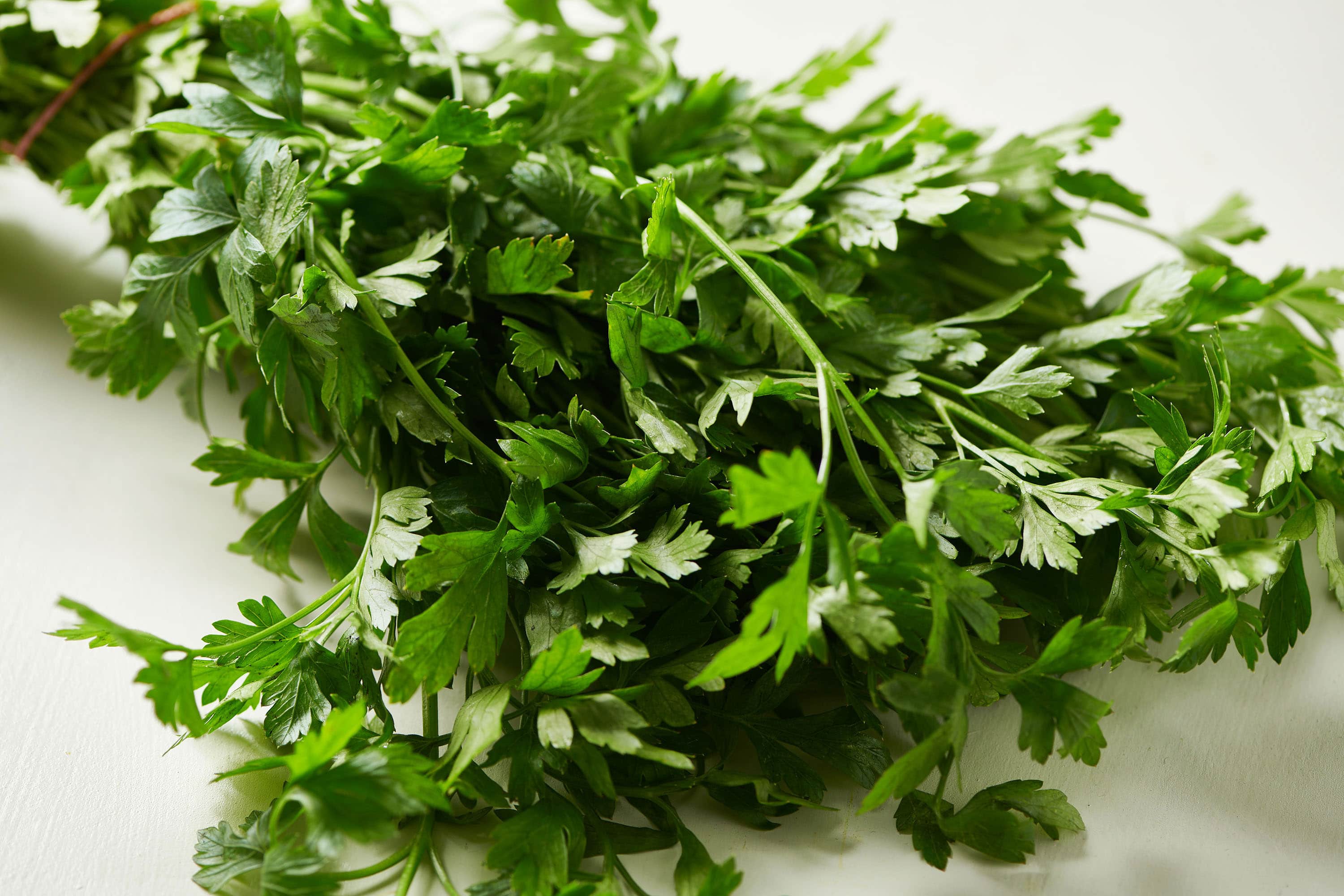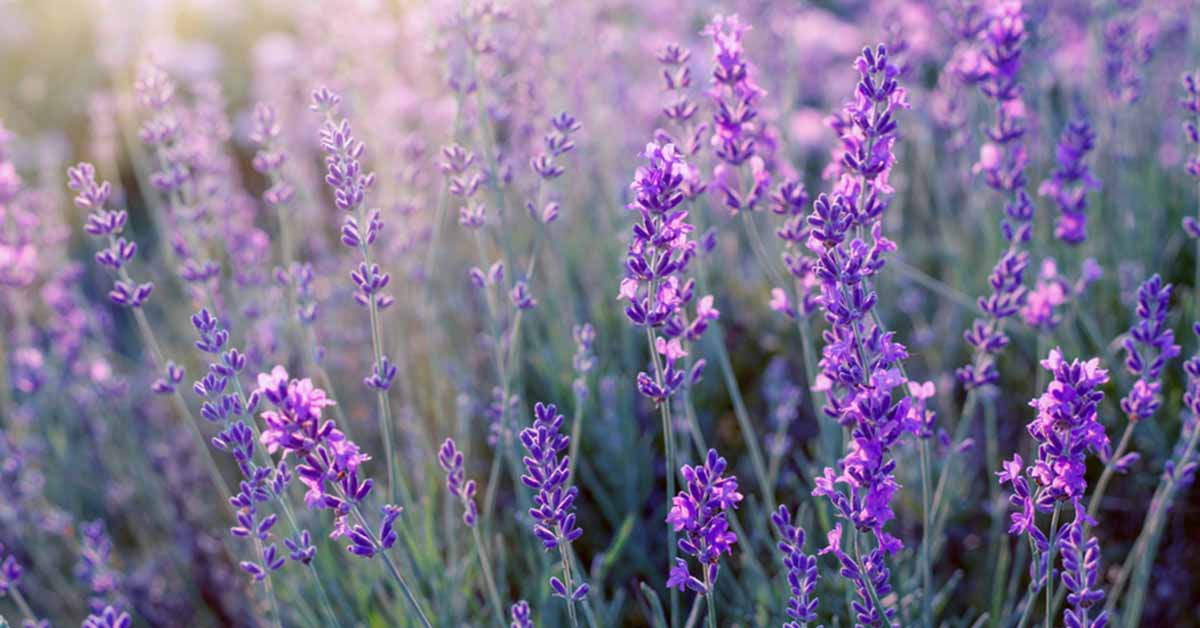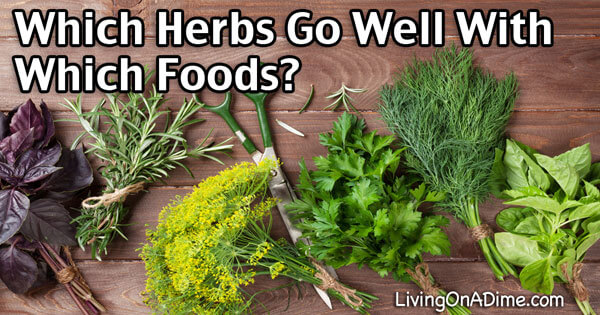Cooking with Fresh Herbs: A Beginner’s Guide


Essential Cooking Herbs
Are you looking to elevate your culinary creations with the perfect blend of flavors? Well, look no further than these essential cooking herbs that will take your dishes to the next level!
Basil: A versatile herb for Italian and Mediterranean dishes.
If you want to infuse your Italian and Mediterranean dishes with a burst of fresh and aromatic flavors, then basil is the herb for you. From classic dishes like Caprese salad to homemade pesto sauce, basil adds a delightful touch to any recipe. Its bright green leaves and slightly peppery taste make it a must-have herb in your pantry.
Rosemary: Adding a fragrant and earthy flavor to roasted meats.
When it comes to roasted meats, rosemary is the go-to herb to enhance the flavor profile. Its woody and piney aroma adds a delightful fragrance to dishes like roast chicken, lamb, and potatoes. Simply sprinkle some fresh rosemary leaves or use dried rosemary for a burst of earthy flavors that will leave your taste buds craving for more.
Thyme: Enhancing the taste of soups, stews, and sauces.
Thyme is a herb that can elevate the taste of soups, stews, and sauces with its earthy and slightly minty flavor. Whether you are making a hearty vegetable soup, a comforting beef stew, or a flavorful tomato sauce, adding a touch of thyme can take your dish from ordinary to extraordinary. Its small leaves and aromatic taste make it a versatile herb for all kinds of savory dishes.
So, the next time you are in the kitchen, don't forget to have these essential cooking herbs on hand. Experiment with different combinations and let your taste buds be your guide. Happy cooking!

Aromatic Cooking Herbs
Parsley: Adding freshness and color to your dishes.
If you are looking for a versatile and widely used herb to enhance your cooking, parsley is the way to go. Not only does it add a pop of vibrant green color to your dishes, but it also provides a fresh and slightly peppery flavor. Use it as a garnish, in salads, or even in soups and stews to liven up the taste and presentation of your meals. Plus, parsley is rich in vitamins A, C, and K, making it a healthy addition to your diet.
Cilantro: A staple in Mexican and Asian cuisine.
Cilantro, also known as coriander, is a key ingredient in many Mexican, Asian, and Indian dishes. It has a distinctive taste often described as citrusy and slightly peppery. Cilantro leaves are perfect for adding flavor to salsas, guacamole, curries, and stir-fries. Some people have a love-hate relationship with cilantro, as its flavor can be quite polarizing. If you enjoy its unique taste, cilantro can elevate your dishes to a whole new level.
Mint: Perfect for refreshing drinks and desserts.
When it comes to refreshing flavors, mint is the go-to herb. Its cooling and invigorating taste make it a popular choice for cocktails, mocktails, and infused water. Mint leaves also add a delightful touch to desserts such as ice cream, chocolate dishes, and fruit salads. Additionally, mint has been used for centuries in traditional medicine for its soothing properties. So why not incorporate this versatile herb into your culinary repertoire?
So there you have it, a guide to three aromatic cooking herbs that can elevate your dishes to new heights. Whether you choose parsley, cilantro, or mint, these herbs are sure to add flavor, freshness, and a touch of excitement to your meals. Enjoy experimenting with different combinations and recipes to discover the perfect balance of herbs for your taste buds. Happy cooking!
:max\_bytes(150000):strip\_icc()/Simply-Recipes-Oregano-Guide-LEAD-07-0b58c4204c7444dc99fe57ab420b5048.jpg)
Bold and Spicy Cooking Herbs
Oregano: Enhancing the flavors of Italian and Greek dishes.
Looking to add a punch of flavor to your pizzas, pasta sauces, or Greek salads? Oregano is the culinary herb you need. With its robust and slightly bitter taste, it is a staple in Mediterranean cuisine. Sprinkling dried oregano leaves over your dishes infuses them with a tantalizing aroma and a distinct, earthy flavor. Oregano also pairs well with other bold herbs like basil and thyme, so don't be afraid to experiment and create your own herb blends.
Chives: Adding a mild onion-like flavor to various recipes.
If you want to add a subtle onion flavor to your dishes without overpowering them, chives are the way to go. These slender green herbs have a mild and delicate onion-like taste that is perfect for salads, soups, and creamy dips. Chives can be used fresh, chopped and sprinkled over your dishes, or as a garnish to add a pop of color. They also make a great addition to scrambled eggs and baked potatoes.
Dill: Perfect for pickling, seafood, and cream-based dishes.
When it comes to pickling, seafood, and cream-based dishes, dill is the herb you can rely on. Its feathery leaves and distinctive flavor add a fresh and tangy taste to dishes like dill pickles, gravlax, and creamy sauces. The best part is that both the leaves and the seeds of the dill plant are edible, giving you the option to use it in different preparations. So, next time you're making a batch of homemade pickles or cooking up a fish dish, be sure to have some dill on hand.
Whether you're a seasoned cook or a beginner in the kitchen, these bold and spicy herbs will elevate your dishes to new heights of flavor. So go ahead, be adventurous, and experiment with oregano, chives, and dill in your next culinary creation.

Medicinal Cooking Herbs
Are you interested in exploring the world of cooking with medicinal herbs? You'll be amazed to discover the wonderful flavors these herbs can bring to your dishes, while also offering various health benefits. Here is a guide to three popular medicinal cooking herbs:
Lavender: Adding a floral touch to both sweet and savory recipes.
Lavender is not just a beautiful flower; it can also add a unique flavor to your culinary creations. Its floral aroma and slightly sweet taste make it a versatile herb that can be used in both sweet and savory dishes. Add a pinch of dried lavender buds to your baked goods, ice cream, or lemonade for a subtle floral touch. In savory dishes, lavender pairs well with meats, vegetables, and cheese, adding an interesting dimension to your cooking.
Sage: Known for its healing properties and flavorful addition to dishes.
Sage is not only famous for its healing properties but also for its rich and earthy flavor. Commonly used in Mediterranean and Italian cuisines, sage adds depth and warmth to dishes. It pairs perfectly with roasted meats, pasta sauces, and even buttery sauces. To release its aroma and flavor, gently crush the sage leaves before adding them to your recipes.
Peppermint: Soothing digestive issues and adding a minty kick to food.
Peppermint is a refreshing herb with a cool, minty flavor that can elevate both sweet and savory dishes. Apart from its delicious taste, peppermint has been used for centuries to relieve digestive issues. You can add fresh peppermint leaves to salads, cocktails, or desserts for a burst of flavor. It is also a great addition to savory dishes like soups or marinades, providing a unique twist.
By incorporating these medicinal cooking herbs into your recipes, you can enhance the flavors of your dishes while reaping their health benefits. So, get creative in the kitchen and explore the world of culinary herbs!

Growing and Storing Cooking Herbs
Tips for growing your own herb garden.
If you love cooking and want to add fresh flavors to your dishes, growing your own herb garden is a fantastic idea. Not only will it save you money, but it will also provide you with a constant supply of fresh and flavorful herbs. Here are some tips to help you get started:
-
Choose the right location: Most herbs thrive in a sunny spot, so choose a location in your yard or balcony that gets at least six hours of sunlight per day.
-
Start with the basics: Begin your herb garden with a few essential herbs such as basil, rosemary, thyme, and parsley. These are versatile herbs that can be used in a wide variety of dishes.
-
Provide the right conditions: Herbs need well-drained soil, so make sure to amend your soil with organic matter like compost. Regular watering and occasional fertilization will also help your plants thrive.
Proper methods for storing and preserving fresh herbs.
If you have an abundance of fresh herbs and want to prolong their shelf life, here are some methods for storing and preserving them:
-
Drying: Hang your herbs upside down in a dry, well-ventilated area until they are completely dry. Then, store them in airtight containers away from direct sunlight.
-
Freezing: Chop your herbs and place them in ice cube trays. Fill the trays with water and freeze. Once frozen, transfer the herb cubes to freezer bags for easy use in your recipes.
-
Infusing: Create herb-infused oil or vinegar by combining fresh herbs with oil or vinegar in a sterilized container. Let the mixture sit for a few weeks, then strain out the herbs and transfer the infused oil or vinegar to a bottle.
Growing and storing your own cooking herbs is not only rewarding but also a convenient way to enhance your culinary creations. So get your hands dirty and start enjoying the fresh flavors of homegrown herbs in your dishes!

Cooking with Herbs
Understanding how to incorporate herbs into different dishes.
So, you've decided to take your cooking game up a notch by incorporating herbs into your dishes. Great choice! Herbs can add incredible flavor, aroma, and freshness to your culinary creations. But where do you start?
First, it's important to understand that different herbs complement different foods. For example, basil goes well with tomatoes and is often used in Italian dishes, while cilantro adds a zing to Mexican and Asian cuisines. Experimenting with various herbs will help you discover the perfect pairing for each dish you want to enhance.
To incorporate herbs into your cooking, start by using fresh herbs whenever possible. This will provide the most vibrant flavors. You can grow your own herbs at home or buy them from the grocery store or farmer's market. Remember to wash them thoroughly before use.
Next, consider the intensity of the herb's flavor. Some herbs, like rosemary and thyme, have strong flavors and are best used in small amounts. On the other hand, herbs like parsley and chives have milder flavors and can be used more generously.
Recipes and ideas for using various cooking herbs.
Now that you have a basic understanding of incorporating herbs into your dishes, let's explore some recipes and ideas to get you started on your herb-infused culinary journey:
-
Basil: Make a classic Caprese salad with fresh tomatoes, mozzarella, and basil leaves. You can also use basil in pasta dishes, pesto, or as a topping for pizzas.
-
Cilantro: Add cilantro to your homemade guacamole, salsa, or as a garnish for tacos and curries.
-
Rosemary: Infuse olive oil with rosemary for a delicious dip. You can also use rosemary to season roasted vegetables, grilled meats, or in bread recipes.
Remember, the possibilities with herbs are endless. Feel free to explore and experiment with different herbs and dishes to create your own unique flavor combinations. So go ahead, sprinkle some magic into your cooking with the power of herbs!

Conclusion
So, you're ready to take your culinary skills to the next level and explore the exciting world of cooking herbs. By incorporating these flavorful ingredients into your recipes, you can enhance the taste and aroma of your dishes, impressing your family and friends with your culinary creations. Remember to start with the basics and gradually experiment with different herbs to find the perfect combinations that suit your palate. Whether you choose to use fresh herbs or dried herbs, each one has its own unique qualities that can bring out the best in your cooking. Don't be afraid to get creative and try new things – cooking should be fun and enjoyable!
Experimenting with cooking herbs and enhancing flavors in your culinary creations.
When it comes to cooking herbs, the possibilities are endless. You can use them in various ways – fresh or dried, in marinades, soups, stews, sauces, and even desserts! Here are a few tips to get you started on your herb-infused culinary journey:
-
Pairing herbs with the right ingredients: Some herbs work best with specific dishes. For example, basil is a great complement to tomatoes, while rosemary adds a savory touch to roasted meats.
-
Herb combinations: Experiment with different herb combinations to create unique flavors. For instance, try mixing thyme, sage, and oregano for a delicious blend.
-
Using herbs as garnish: Fresh herbs make excellent garnishes, adding a pop of color and freshness to your dishes.
Frequently Asked Questions about cooking herbs.
Q: Can I use dried herbs instead of fresh?
A: Yes, you can. However, keep in mind that dried herbs are more potent, so you'll need to adjust the quantities accordingly.
Q: How do I store fresh herbs?
A: To keep your herbs fresh, store them in the refrigerator wrapped in a damp paper towel or in a glass of water.
Q: Can I use herbs in desserts?A: Absolutely! Some herbs, like mint and basil, can add a refreshing twist to desserts like fruit salads and sorbets.
Remember, cooking with herbs is all about experimenting and finding what works best for you. So, have fun, get creative, and enjoy the delicious flavors that herbs can bring to your cooking!



